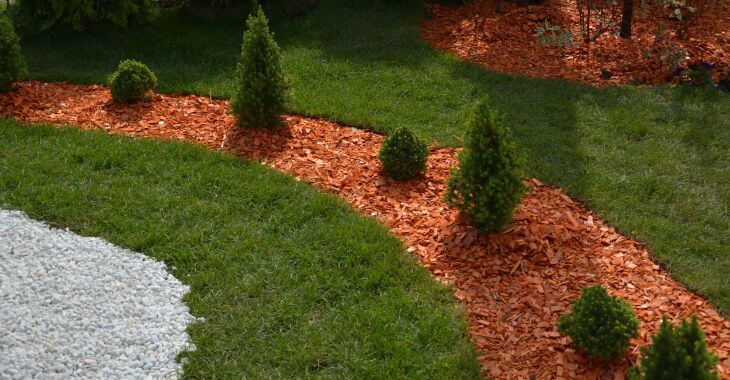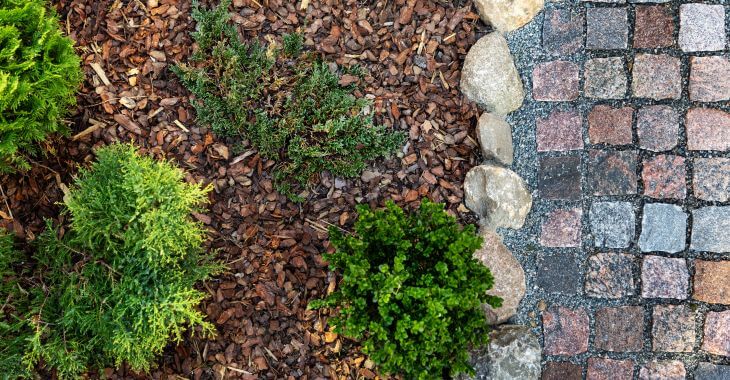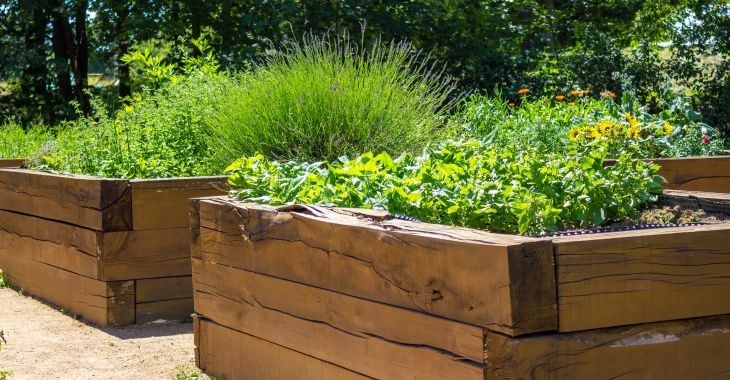Exploring the Different Mulch Types: Which Is Right for Your Landscape?

Mulch is more than a finishing touch—it protects your soil, conserves moisture, prevents weeds, and boosts curb appeal. But not all mulch is created equal. With so many mulch types available, knowing which one to use can be overwhelming.
Here is a breakdown of the most popular mulch materials and how to choose the best one for your landscape needs.
Hardwood Mulch
Hardwood mulch is one of the most common mulch types used in residential and commercial landscaping. It is made from shredded tree bark and wood scraps and is generally affordable and easy to find. It breaks down over time, adding nutrients to the soil.
- Works well around trees and shrubs
- Comes in natural and dyed mulch colors
- Needs replenishing about once a year
- Ideal for general landscaping and weed suppression
Hardwood mulch is versatile and gives a clean, uniform look to flower beds and walkways.
Cedar Mulch
Cedar mulch is known for its pleasant aroma and natural insect-repelling properties. It decomposes slowly, so it lasts longer than many other mulch types, making it a great low-maintenance choice for long-term coverage. Some of the other benefits of cedar mulch:
- Naturally resists decay and fungi
- Repels some insects, helping protect plants
- Great for garden beds and decorative areas
- Often it is a lighter color with a distinct smell
When comparing cedar vs cypress bugs, cedar wins in repelling termites and ants, making it ideal near foundations or wood structures.
Cypress Mulch
Cypress mulch offers similar benefits to cedar, including insect resistance and a fresh scent. It is often used for decorative beds and pathways. However, concerns exist about environmental sustainability due to harvesting practices. Some features include:
- Long-lasting and slow to decompose
- Helps retain soil moisture and prevent erosion
- Good for ornamental landscapes and play areas
- Can be more expensive depending on the source
In the cedar vs cypress bugs debate, both offer natural resistance, but cedar is often considered more effective and sustainable.
Pine Bark and Pine Straw
Pine bark and pine straw are popular in the Southeast. Pine bark is chunky and slow to break down, while pine straw is made from dried pine needles and is easy to spread over large areas.
- Pine bark is great for acid-loving plants
- Pine straw stays in place on slopes and hills
- Inexpensive and widely available
- Best used in flower beds, gardens, and tree rings
Both mulch types offer a more rustic look and are lightweight and easy to install.
Rubber Mulch
Rubber mulch is made from recycled tires and is growing in popularity, especially in play areas and commercial properties. It doesn’t decompose, so it’s a long-term solution—but it’s not ideal for gardening.
- Doesn’t attract bugs or fungi
- Great for high-traffic areas like playgrounds
- Doesn’t add nutrients to the soil
- More expensive up front but low maintenance
It’s one of the most durable mulch types, but not the best choice for flower or vegetable gardens.
Dyed Mulch
Dyed mulch is often made from recycled wood and colored to enhance visual appeal. It comes in red, black, and brown, making it a go-to for homeowners who want a polished landscape look.
- Adds bold, vibrant color to landscape beds
- Good for decorative purposes and curb appeal
- Often needs to be refreshed yearly
- Dye is usually non-toxic, but the color may fade
The dyed mulch fade rate depends on sun exposure and rainfall, but generally, color lasts 9–12 months before needing a touch-up.
Compost or Organic Mulch
Compost or organic mulch includes grass clippings, shredded leaves, and other biodegradable materials. These break down quickly and enrich the soil, making them a favorite for vegetable gardens. Some facts about organic mulch:
- Great for boosting soil nutrients
- Inexpensive or free if homemade
- Needs frequent replacement
- May attract insects if not properly managed
This is one of the most eco-friendly mulch types, perfect for gardeners focused on soil health.
Which Mulch Type Is Best for You?
Each mulch type serves a different purpose depending on your landscaping goals, location, and aesthetic preferences. Here’s a quick summary to help guide your choice:
- Hardwood mulch: General-purpose and budget-friendly
- Cedar mulch: Decorative and naturally bug-repellent
- Cypress mulch: Durable and moisture-retaining
- Pine bark/straw: Good for acidic soil and slopes
- Rubber mulch: Long-lasting for playgrounds or high-traffic areas
- Dyed mulch: Bold color and style; watch dyed mulch fade rate
- Compost: Soil enrichment for gardens and beds
Choosing the right mulch types ensures your landscape stays healthy and looks great year-round.
No matter what look you’re going for or what challenges your landscape faces, there’s a mulch type that fits your needs. Whether you prioritize durability, color retention, pest resistance, or soil enrichment, making an informed choice can enhance both the appearance and performance of your outdoor spaces.

By understanding the differences between mulch types—from the cedar vs cypress bugs debate to how dyed mulch fade rate affects longevity—you can select the best solution for your yard, garden, or commercial property.


